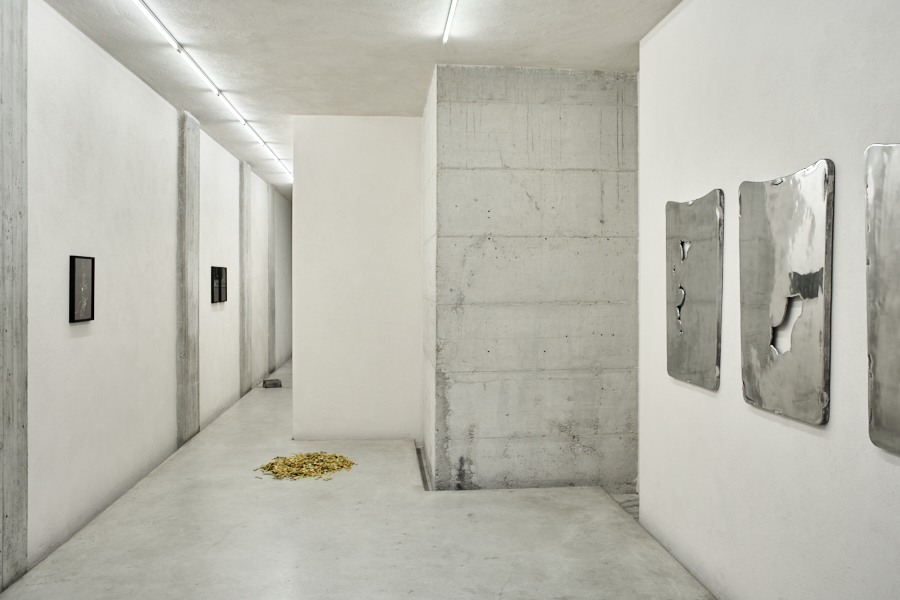
One of the most debated issues in philosophy is the principle of identity, which states that everything is equal to itself (A=A), i.e. that a thing cannot be "A" and "not A" at the same time. This axiom was affirmed explicitly as a direct consequence of the Aristotelian principle of non-contradiction, according to which "it is impossible for contradictory statements regarding the same object and at the same time to be true". In Der Satz der Identität (1957) Martin Heidegger, in declaring the primacy of existence over essence, according to which existing means above all implementing the possibility of acting (and not simply of knowing objects), contested this consequentiality by demonstrating the obligation of thought to contradict itself when the validation of "A" must necessarily pass through its splitting (A=A), which invalidates its supposed uniqueness.
These objections, which paved the way for the Anglo-Saxon intuitive logic and for the idea that practice must precede knowledge, suggest an intriguing starting point for introducing the artistic research of Elia Cantori, which has always focused on the investigation of documentary and synthetic possibilities of the form in its ability to adhere to the phenomenon-event that generates it. In the Endless Measurement exhibition, the artist brings together a corpus of new works united by the intention of undermining the idea that replicas of the same referent must inevitably generate identical copies, each of which reproduces with the same degree of fidelity the object from which it derives. To invalidate this assumption, apparently incontrovertible from a logical point of view, Elia Cantori makes use of the practice of the cast, which he had previously used as a means of multiplying the difference, and of procedures proper to scientific investigation, in particular here the measurement, which translated on a creative level give rise to surprising outbursts of unpredictability. In spontaneous affinity with the incessant aforementioned philosophical controversy, the artist engages himself in the impossible attempt to reach a form coinciding with the essence which, instigating him to experience the dissolution of the essence in the phenomenon, ends up finding the most authentic nucleus of the "being of things" in the same process of different repetition which is at the origin of its disintegration.
In the Untitled (Key) installation we see a potentially infinite sequence of brass casts of the key from Elia Cantori’s former studio in London, whose original materials that survived the demolition he had already compressed in 2008 into a large white sphere in the artwork entitled Stanza. The replicas of the key, all different from each other because they belong to a consequential chain of fusions in which each copy becomes the matrix of the next, are further differentiated by the random aggregation on their surfaces of thin metal sheets resulting from the process. The fact that the difference increases with the progressive integration of all the successive deviations from the original makes the keys unusable for opening the lock for which they were intended, but in this they are just as useless as the original, associated with a door which can no longer give access to anyhere. Instead, all the keys are perfectly interchangeable in fulfilling their function of disclosing to the imagination the visual idea of that now non-existent room, and precisely here their poetic raison d'etre resides.
Untitled (Matter of Gravity) is an aluminum cast of a 20 kg iron parallelepiped, in which the precise reproduction of the shape of the model does not affect the intrinsic difference between the two objects, one of which was produced precisely to be used as measure unit. The difference in specific weight between the two materials makes the second one radically inconsistent with its declared essence. The adherence to the function of the copy could be restored only through a significant increase in its volume, which would make it outwardly inconsistent with the original. The impracticable reconciliation between morphology and substance does not affect, however, the fact that they are equally effective in evoking (and quantifying) the gravity force to which their bodies are subject, the same that anchors us to the ground and sometimes, metaphorically, oppresses us.
The Untitled (Measurements) series, on the other hand, consists of some aluminum casts of the same wooden meter, which is made like the keys through the constant replacement of the matrix with the latest copy. The unequal length of these tools, determined by the different modes of solidification of the metal, makes them unreliable as measurement parameters because they would determine more or less imprecise readings with respect to the conventionally established length of a metre, to which the original is supposed be compliant. The gradual increase in the gap also affects the intermediate measurement notches, whose unequal extensions invalidate their reciprocal relationships, which no longer derive from the regular subsequent subdivision of a length, but from the unpredictable expansions of the metal during fusion. Here the artist implements his personal process of measuring the imponderable, which seems to proceed by methodical approximations in the utopian intention of then framing the discordant material reactions he himself triggered in a numerical rule to materialize a succession of aleatory declinations of truth.
The exploration of the mental spaces revealed by a rigorous but improper use of measurement systems continues in Untitled (Plumb), a series of photographic impressions created by directly impressing the photographic paper with a plumb line dropped from above. The visual trace on the film of the instrument, whose function in construction is to determine the vertical direction with respect to a certain point, in this way no longer returns the straight line which attracts the weight to the ground due to the gravity force, but the undulating relaxation of the rope that follows the fall of the sinker as a long wave of the energy generated during its journey. The fact that the progressive increase of the deviation from reality, rather than neutralizing the normative reference function proper to the originals, universalizes their significance in an imaginative way culminates in the Untitled (Mirror) series. In this sumptuous wall sequence of aluminum casts from antique mirrors, frames and reflecting surfaces are homogenized by a uniform casting that returns an ambiguous reflection between presence and absence of the surrounding environment, materializing the contradictory feature of these replicas to be and at the same time not to be refraction vehicles of the visible.
Emanuela Zanon
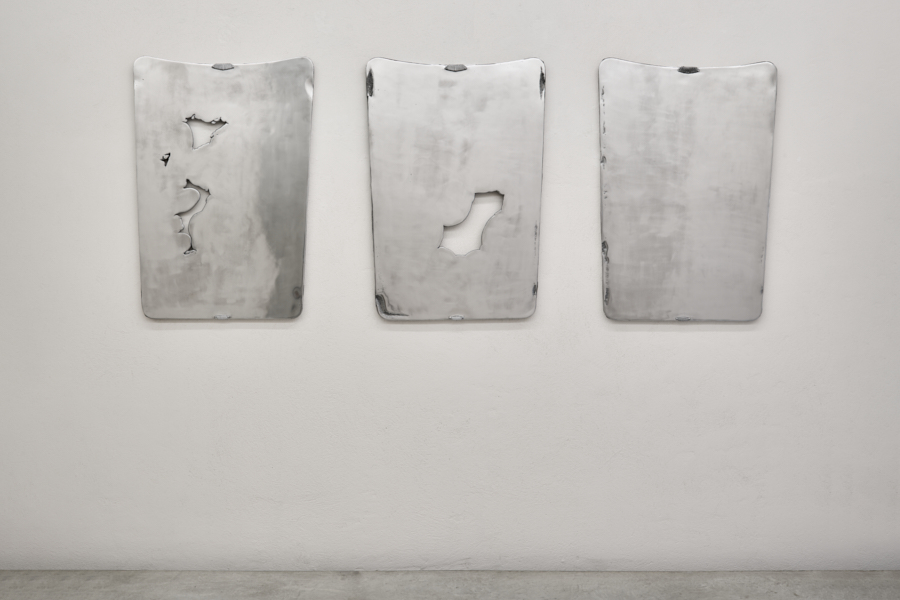
Untitled (Mirror), 2023, aluminum, triptych, 103 x 71 x 3 cm (each)

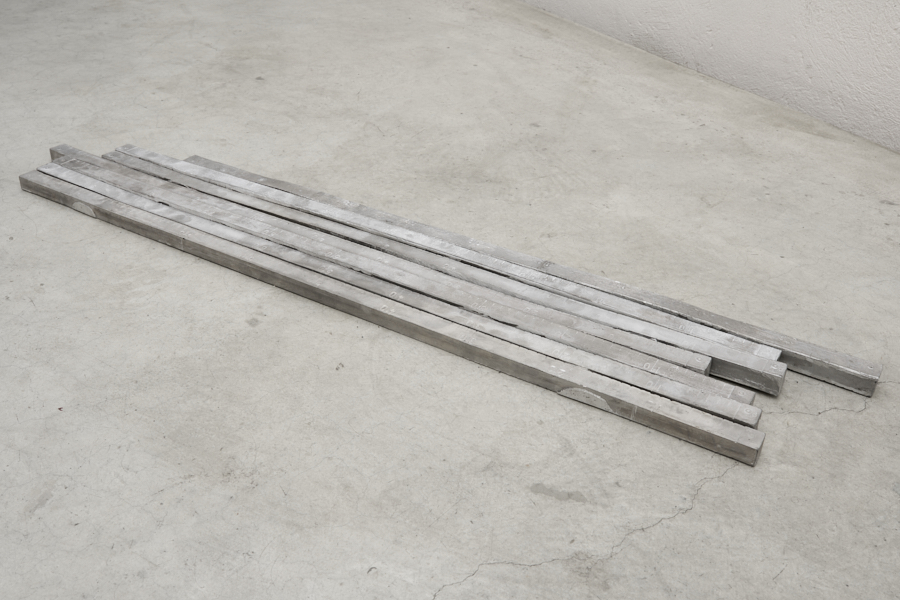
Untitled (Measurements), 2023, aluminum, variable dimensions
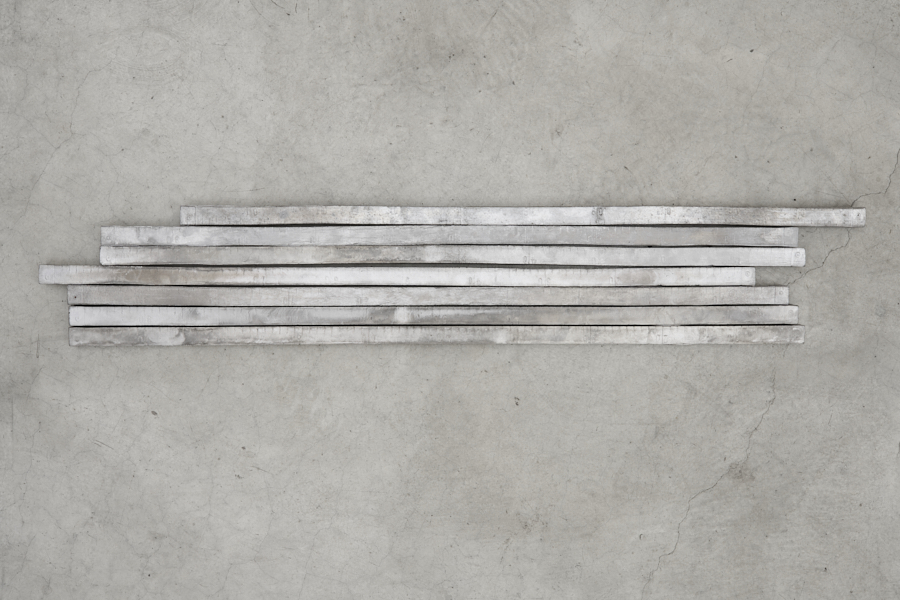
Untitled (Measurements), 2023, aluminum, variable dimensions
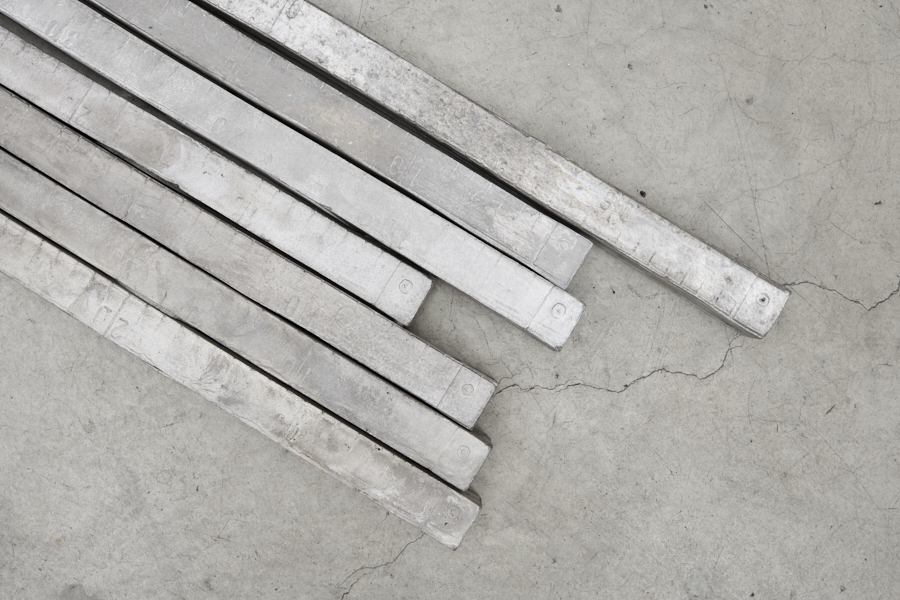
Untitled (Measurements), 2023, detail
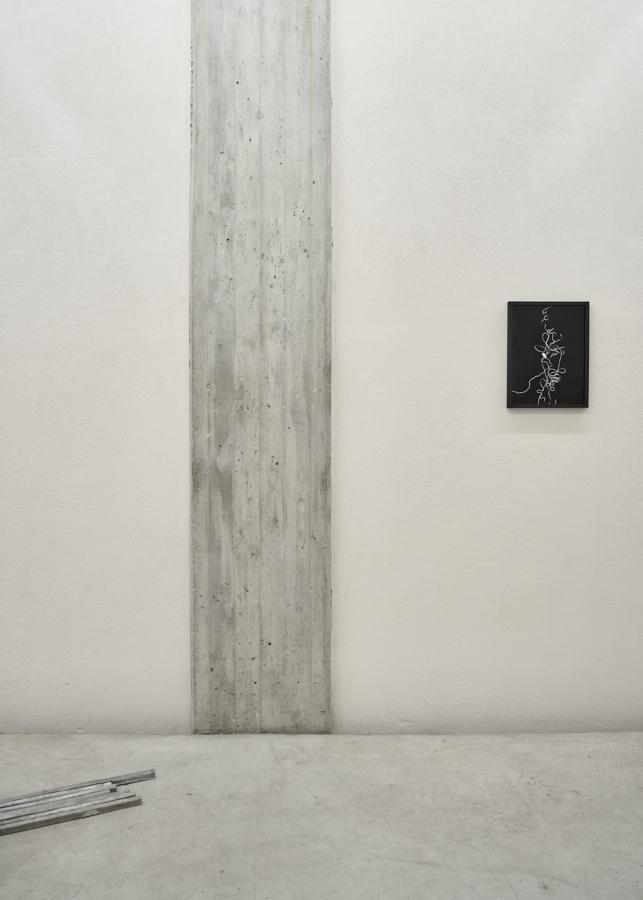

Untitled (Plumb), 2023, photogram, 42 x 32 x 3 cm (frame)

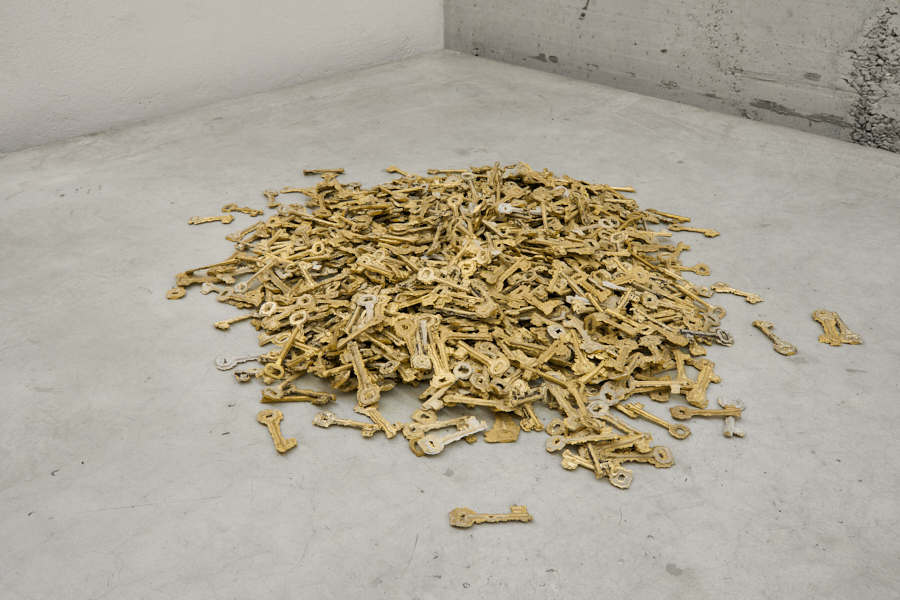
Untitled (Key), 2023, brass, variable dimensions
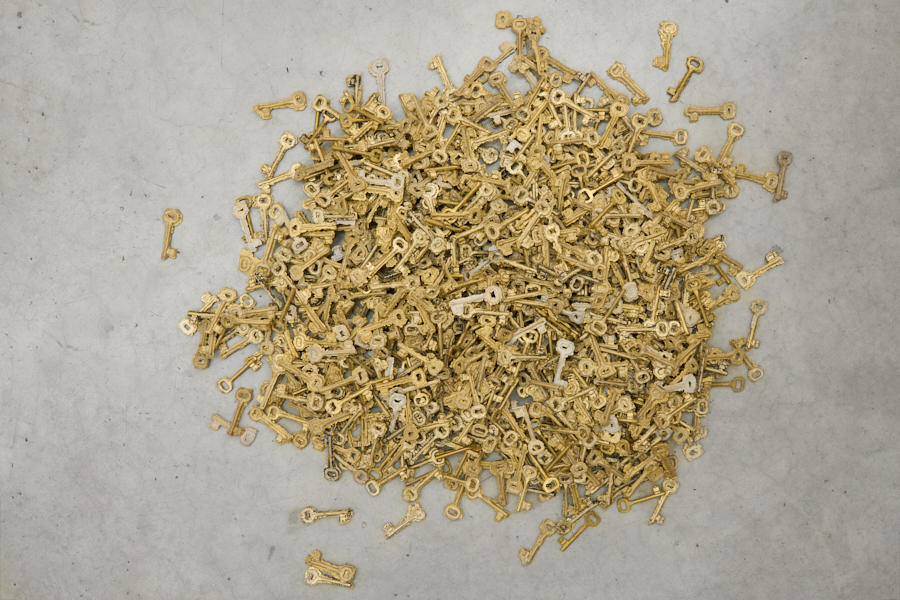
Untitled (Key), 2023, brass, variable dimensions
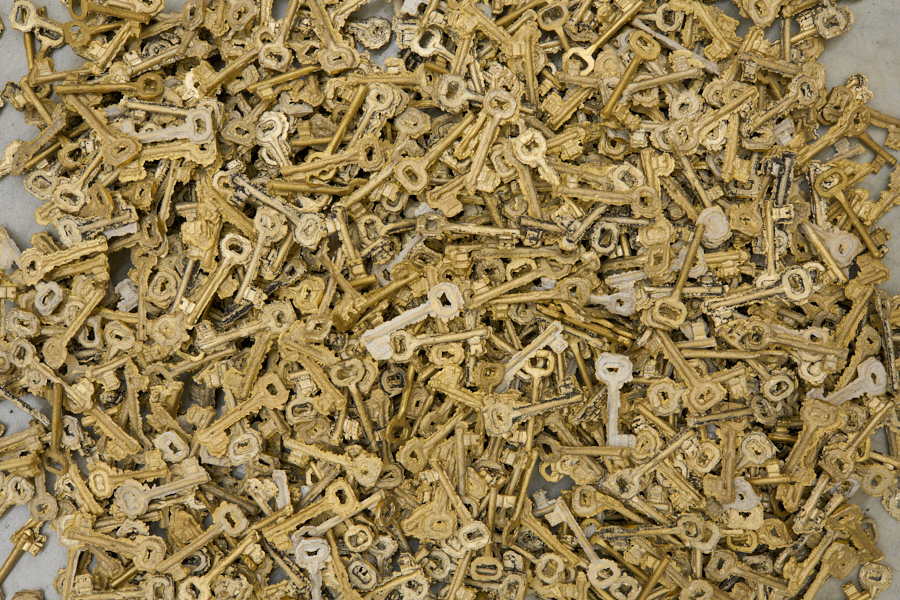
Untitled (Key), 2023, detail
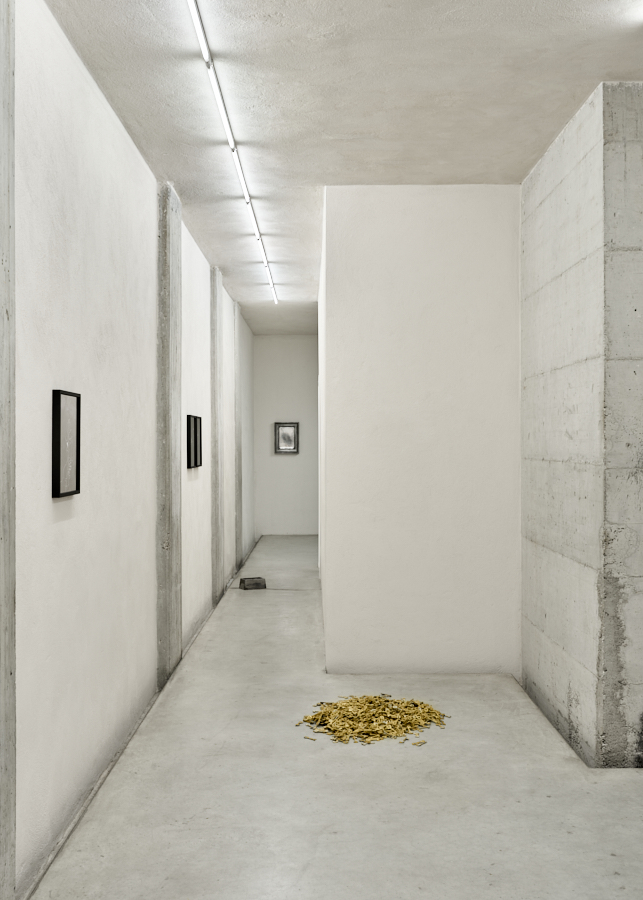
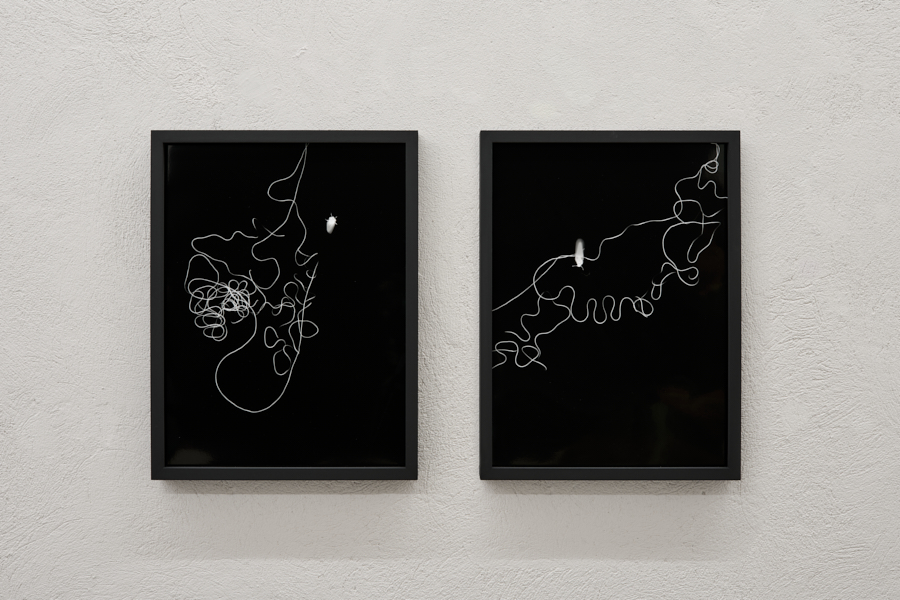
Untitled (Plumb), 2023, photogram, 42 x 32 x 3 cm (each)
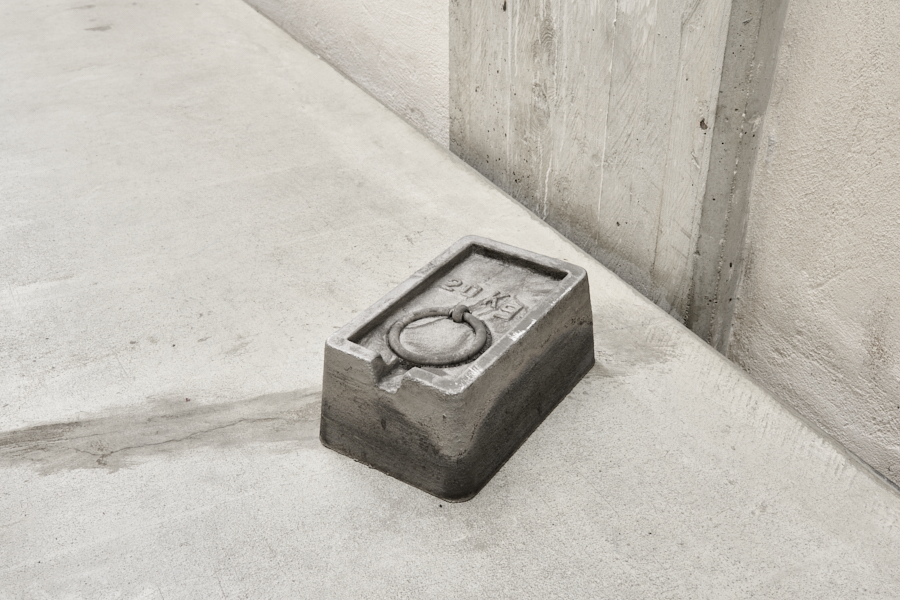
Untitled (Matter of Gravity), 2023, aluminum, 10 x 16 x 25 cm

Untitled (Matter of Gravity), 2023, aluminum, 10 x 16 x 25 cm
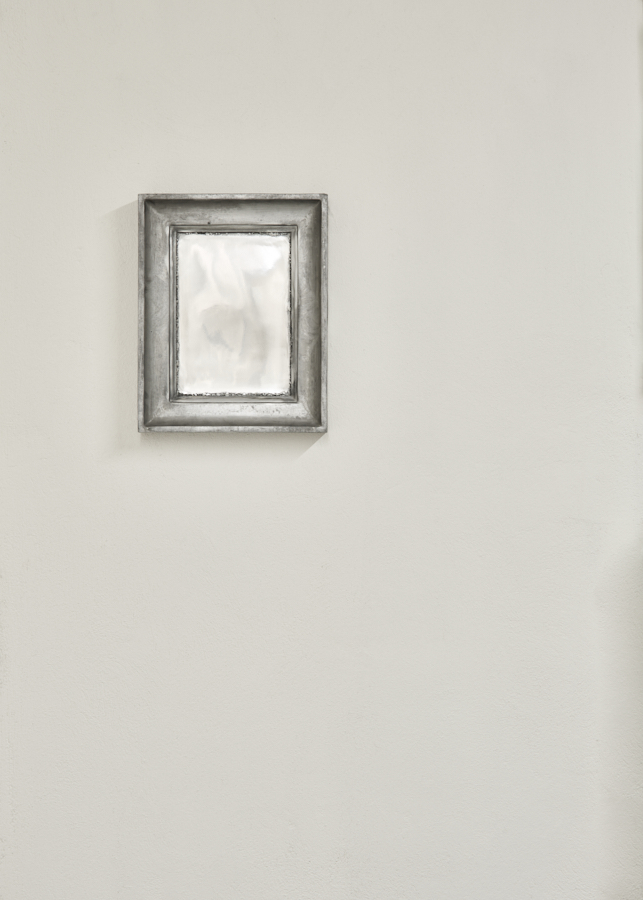
Untitled (Mirror), 2023
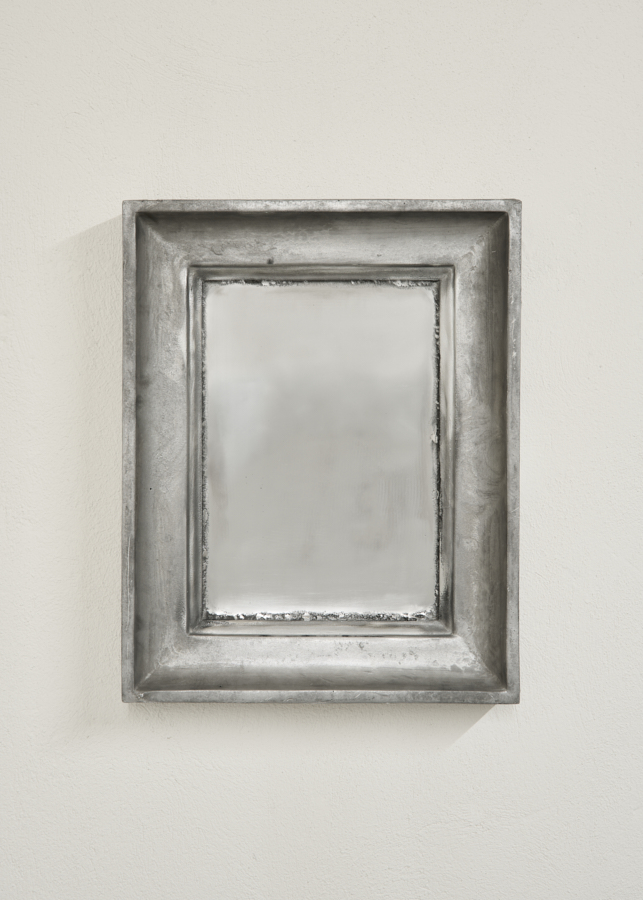
Untitled (Mirror), 2023, aluminum, 49 x 39 x 6,5 cm
